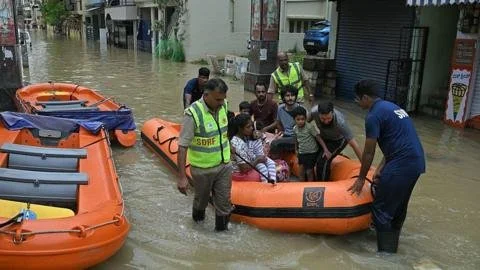Bengaluru Drowns: A Tech Hub's Struggle Against the Rains
Bengaluru, often hailed as India’s Silicon Valley, is currently grappling with severe flooding following an unprecedented deluge of 100 mm (4 inches) of rain in a single day—a record not seen since 2011. The city has been put on high alert as more pre-monsoon showers are expected due to cyclonic activities in the Andaman Sea. The impact of this heavy rainfall has been tragic, with confirmed casualties, including three lives lost—among them, a 12-year-old boy and a 35-year-old female employee who lost her life when a compound wall collapsed in an IT corridor.
The urban landscape of Bengaluru has transformed into a virtual water world, with commuters wading through knee-deep water and cars abandoned on submerged streets. Many households have also reported flooding. The city corporation is on the frontline, addressing 210 flood-prone areas and working tirelessly to mitigate the situation. DK Shivakumar, Karnataka’s Deputy Chief Minister, has attempted to reassure citizens that there’s no need for panic, despite visible chaos.
Political tensions have flared in response to this natural disaster, with the Bharatiya Janata Party (BJP), the opposition party, blaming the Congress-led state government for neglecting critical infrastructure and long-standing issues. They have demanded an immediate allocation of 10 billion rupees ($117 million) for disaster relief efforts, criticizing the state for insufficient action in the face of recurrent flooding, which experts link to unplanned construction over essential urban wetlands and lakes.
As social media abounds with criticisms against the local authorities, many citizens are expressing frustrations regarding the city’s deteriorating infrastructure. This flooding crisis serves as a stark reminder of the challenges faced by a rapidly growing urban hub, where technological advancements clash with the realities of urban planning shortcomings.

